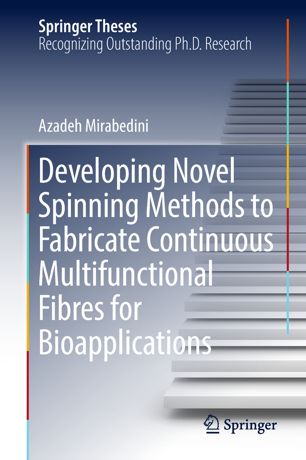

Most ebook files are in PDF format, so you can easily read them using various software such as Foxit Reader or directly on the Google Chrome browser.
Some ebook files are released by publishers in other formats such as .awz, .mobi, .epub, .fb2, etc. You may need to install specific software to read these formats on mobile/PC, such as Calibre.
Please read the tutorial at this link: https://ebookbell.com/faq
We offer FREE conversion to the popular formats you request; however, this may take some time. Therefore, right after payment, please email us, and we will try to provide the service as quickly as possible.
For some exceptional file formats or broken links (if any), please refrain from opening any disputes. Instead, email us first, and we will try to assist within a maximum of 6 hours.
EbookBell Team

4.3
88 reviewsThis book describes the development of three dimensional electroactive fibres using a novel coaxial wet-spinning approach from organic conductors in combination with non-conducting hydrogel polymers. This book also presents the characterization and evaluation of multiaxial biofibres in terms of mechanical, physical, electrochemical and biological properties, and explores their use in a diverse range of applications including implantable electrodes, drug delivery systems and energy-storage systems.
In the first chapter, the author highlights the significance of engineering three dimensional fibres, introduces the involved hydrogels and organic conductors with emphasis on their biomedical application, and collects some of the previously established methods for fabrication of biofibres. In the second chapter, particular attention is given to the overall experimental fabrication methods and characterization analyses conducted in the work. Chapters three to five present the main findings of this work, in which readers will discover how novel hybrid hydrogel fibres with an inner core of chitosan and alginate were prepared and characterized, how graphene was incorporated into coaxial wet-spun biofibres, and how one-dimensional triaxial fibres were developed using a novel coaxial wet-spinning fibre production method and applied as potential battery devices. In the final chapter of this work, the author summarizes the main achievements of the work and outlines some recommendations for future research.